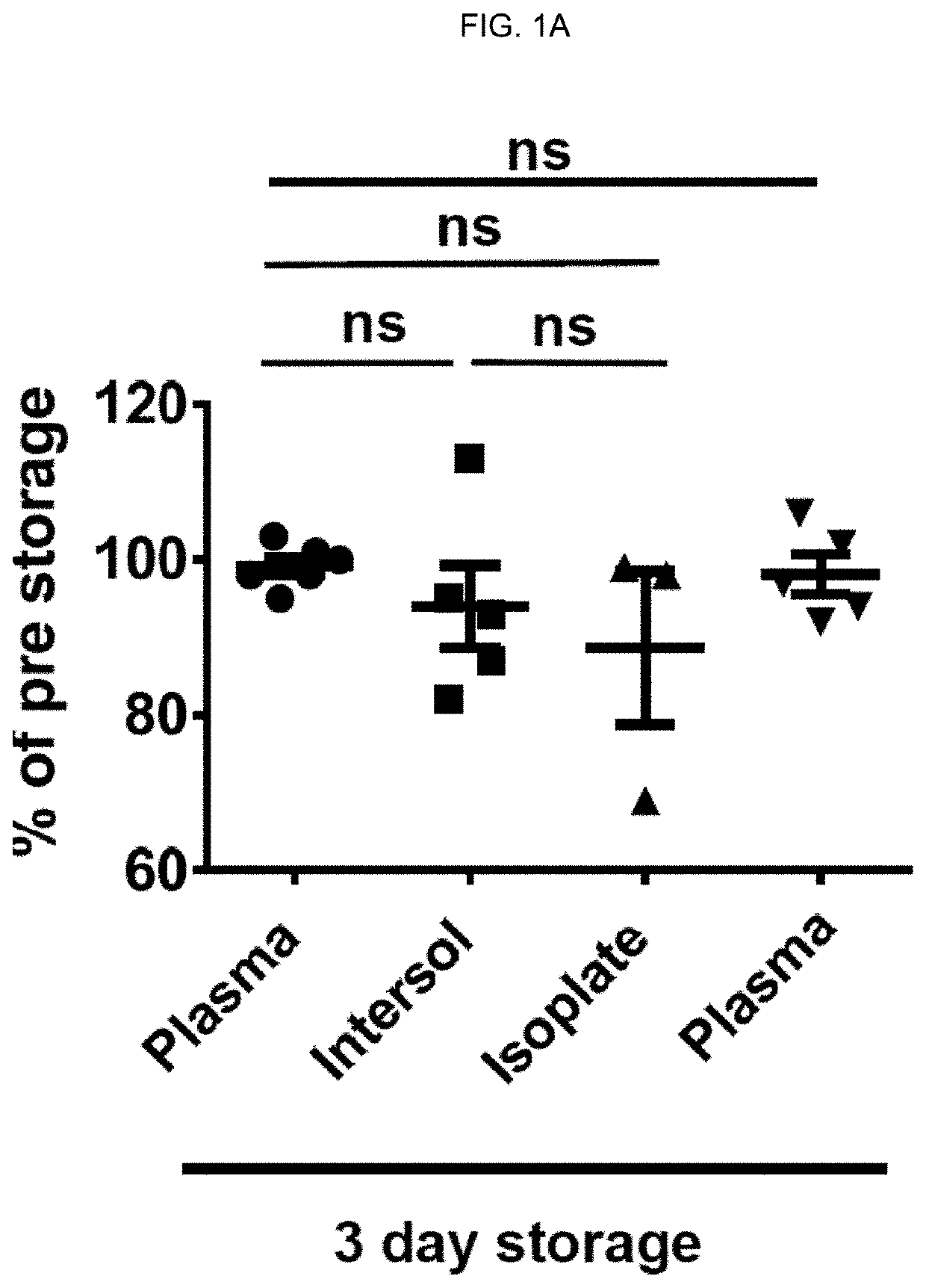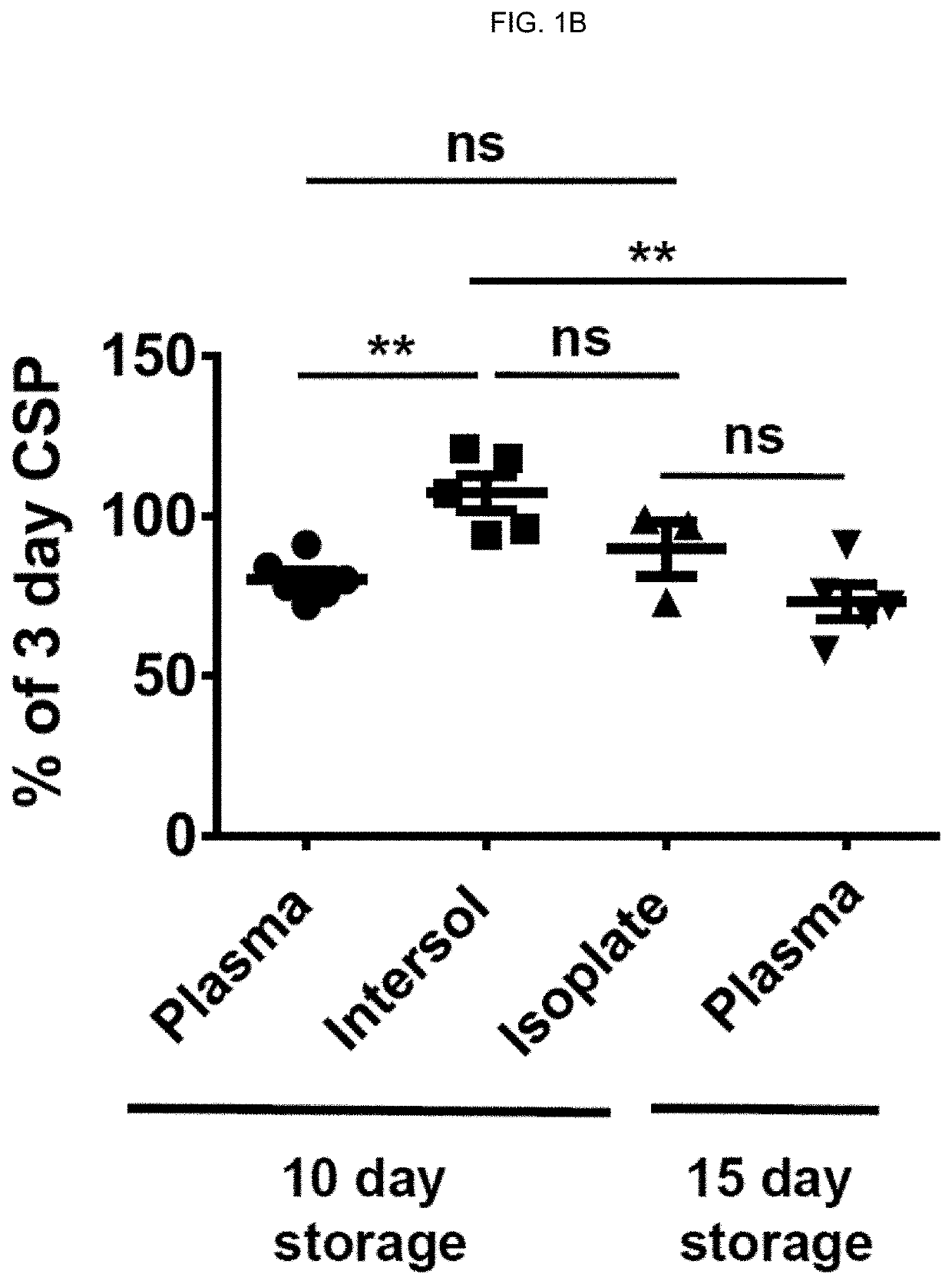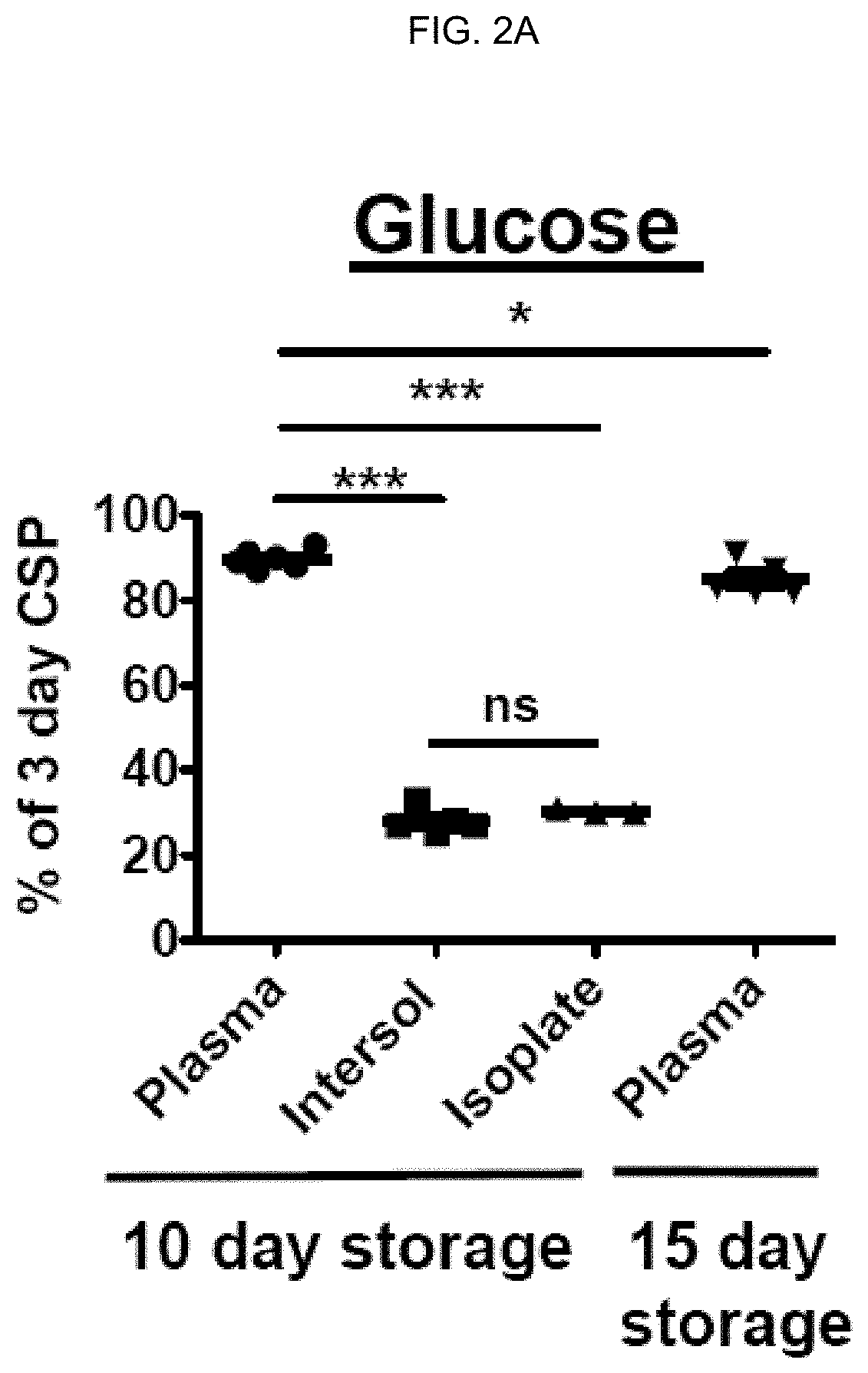Methods to reduce clot formation in cold-stored platelet products
a technology of cold storage and platelet products, which is applied in the field of significantly reducing clot formation in cold storage platelet samples, can solve the problems of life-threatening spontaneous bleeding, increased risk of cutaneous bleeding, and high risk of spontaneous hemorrhage in patients with platelet counts less than 10,000 per l, so as to reduce the formation of clots, reduce the formation of macro-aggregate clots, and improve the storage of platelet samples
- Summary
- Abstract
- Description
- Claims
- Application Information
AI Technical Summary
Benefits of technology
Problems solved by technology
Method used
Image
Examples
example 1
[0193]In vivo Viability of Extended 4° C. Stored Autologous Apheresis Platelets. Introduction. Most U.S. Blood Banks store platelets at room temperature (RT) under gentle agitation with a maximum storage time of 5 days unless additional in vitro bacterial testing is done which permits 7 day storage. Previous studies demonstrated that storing platelets in the cold (4° C., CSP) resulted in a significant reduction in both in vivo recoveries and survivals compared with RT platelets (RSP) stored for the same times. Murphy & Gardner, N Engl J Med 1969; 280: 1094-1098. Subsequent studies with cold-stored platelets identified a clearance mechanism involving GPIb clustering on the platelet surface and in vivo binding to complement type 3 receptors with subsequent hepatocyte internalization. Hoffmeister et al., Cell 2003; 112: 87-97; Snyder & Rinder, N Engl J Med 2003; 348: 2032-2033. In vitro studies suggest that 4° C.-stored platelets have superior functionality compared with RT-stored plat...
example 2
[0216]Effects of storage time prolongation on in vivo and in vitro characteristics of 4° C.-stored platelets. Bacterial contamination of platelet products for transfusion is a major safety problem in blood banking. Cold-storage of platelets could alleviate these issues because of very limited bacterial growth at 4° C. Unfortunately, refrigeration of platelets is known to reduce platelet circulatory lifespan to 1 to 2 days compared to an average lifespan of 4 to 5 days at 22° C. storage (Murphy & Gardner. N Engl J Med. 1969; 280(20):1094-1098). Previous reports suggested superior in vitro performance of platelets stored in the cold (Becker et al. Transfusion. 1973; 13(2):61-68; Reddoch et al. Shock. 2014; 41 Suppl 1:54-61). However, earlier studies about bleeding time corrections after transfusion of cold-stored platelets in thrombocytopenic patients yielded contradictory results. In addition, they were performed in the 1960s and 1970s and require confirmation in contemporary platele...
example 3
[0252]Evaluation of efficacy and safety of cold-stored platelets in healthy human volunteers. Reversal of dual antiplatelet therapy with acetylsalicylic acid (aspirin) and clopidogrel is currently attempted by transfusion of RT-stored platelets, even though conclusive evidence supporting this practice is missing. Cold-stored platelets were the standard of care in the 1960s and 70s. Cold-stored platelets generally perform better than RT-stored platelets in in vitro, functional assays but studies in humans have thus far yielded contradictory results.
[0253]In this randomized, cross-over study, eight healthy adult volunteers who provided a double dose of platelets received a double dose of 5 day cold-stored (after a rest period of 1 hour without agitation at room temperature), or 5-day RT-stored, autologous, and leukoreduced platelets. The first transfusion was followed by a 10-day wash-out period, followed by a second sequence of collection, loading dose and second transfusion of the r...
PUM
 Login to View More
Login to View More Abstract
Description
Claims
Application Information
 Login to View More
Login to View More - R&D
- Intellectual Property
- Life Sciences
- Materials
- Tech Scout
- Unparalleled Data Quality
- Higher Quality Content
- 60% Fewer Hallucinations
Browse by: Latest US Patents, China's latest patents, Technical Efficacy Thesaurus, Application Domain, Technology Topic, Popular Technical Reports.
© 2025 PatSnap. All rights reserved.Legal|Privacy policy|Modern Slavery Act Transparency Statement|Sitemap|About US| Contact US: help@patsnap.com



